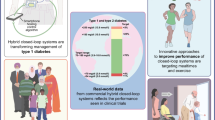Abstract
Studies were performed on the effects of activation of afferent nerves with capsaicin (5 mg/kg i.p.) and lesioning of these nerves with neurotoxic does of capsaicin (50 mg/kg, s.c. in two-day-old rats and 200 mg/kg s.c. in adult rats) on serum glucose and free fatty acid (FFA) concentrations in conditions of changing glucose levels induced by administration of insulin and glucose to starved (16 h) Wistarrats. These studies, showed that capsaicin stimulation of insulin intact rats decreased the hypoglycemic action of insulin, increased hyperglycemia following glucose dosage, increased FFA levels, and prevented the FFA-lowering effect of insulin. Neonatal treatment with capsaicin decreased the hypoglycemic effect of insulin but had no effect on hyperglycemia following glucose doses, but decreased FFA levels. Treatment of adult rats with neurotoxic doses of capsaicin did not alter the effect of insulin on glucose levels and decreased FFA concentrations. Capsaicin stimulation in rats following treatment with neurotoxic doses had no effect on the hypoglycemic action of insulin, but prevented it from affecting the FFA concentration.
Similar content being viewed by others
References
A. M. Astakhova, “Glycogen in the denervated liver,”Arkh. Anat. Gistol. Émbriol. 49, No. 9, 70–76 (1965).
I. N. Kendysh,Regulation of Carbohydrate Metabolism [in Russian] Meditsina, Moscow (1985).
N. P. Mikaelyan, “The role of changes in insulin-binding activity and energy metabolism in the pathogenesis of experimental crush syndrome,”Patol. Fiziol. Éksperim. Terap., No. 1, 19–21 (1992).
N. P. Mikaelyan and Yu. A. Knyazev, “The interaction of insulin with lymphocyte plasma membrane receptors after experimental burn trauma,”Patol. Fiziol. Éksperim. Terap., No. 1, 42–45 (1989).
E. Newsholme and K. Start,The Control of Metabolism [Russian translation], Mir, Moscow (1977).
Yu. A. Petrovich and I. M. Marokko, “Enzymic mechanisms of several forms of neurodystrophy,”Patol. Fiziol. Éksper. Terap. No. 3, 3–10 (1977).
V. K. Spiridonov, “The role of capsaicin-sensitive afferent nerves in the regulation of carbohydrate metabolism in the liver.”Ros. Fiziol. Zh. im. I. M. Sechenova,80, No.4, 101–106 (1994).
S. B. Choi, S. Frontoni, and L. Rosetti, “Mechnism by which calcitonin gene related peptide antagonizes insulin action in vivo,”Amer. J. Physiol. 260, E321-E325 (1991).
W. G. Duncombe, “Colorimetric micro-determination of long-chain fatty acids,”J. Biochem.,88, No. 1, 7–10 (1963).
E. Guillot, A. Coste and I. Angel, “Involvement of capsaicin-sensitive nerves on the regulation of glucose tolerance in diabetic rats,”Life Sci. 59, No. 12, 969–977 (1996).
P. Holzer, “Capsaicin: cellular targets, mechanisms of action and selectivity for thin sensory neurons,”Pharm. Rev.,43, No. 2, 143–201 (1991).
T. Kawada, T. Watanabe, T. Takaishi, T. Tanaka, and K. Iwai, “Capsaicin-induced β-adrenergic action on energy metabolism in rats: influence of capsaicin on oxygen consumption, the respiratory quotient, and substrate utilization,”Proc. Soc. Exp. Biol. Med. 183, No. 2, 250–256 (1986).
W. W. Lautt, “Hepatic nerves: a review of their functions and effects,”Can. J. Physiol. Pharmacol.,58, No. 2, 105–123 (1980).
M. Lavoe, M. Lord and A. Paulin, “Effect of selective hepatic vagotomy on plasma FFA levels in resting and exercising rats,”Amer. J. Physiol.,254, R602–606 (1988).
A. E. Morgan and C. H. Lang, “Involvement of capsaicin-sensitive nerves in regulating the hormone and glucose metabolic response to endotoxin,”Amer. J. Physiol.,36, No. 2, E328-E335 (1997).
A. Niijima, “Glucose-sensitive afferent nerve fibers in the liver and their role in food intake and blood glucose regulation,”J. Auton. Nerv. Syst., No. 3, 207–220 (1983).
A. Niijima, “Neural control mechanism of blood glucose in relation to hunger and satiety,”Int. J. Physiol. 11, No. 1, 60 (1991).
K. Nonogaki and A. Iguchi, “Role of central neural mechanisms in the regulation of hepatic glucose metabolism,”Life Sci.,60, No. 11, 797–807 (1997).
I. Orbach and W. H. H. Andrews, “Stimulation of afferent nerve terminals in the perfused rabbit liver by sodium salts of some long-chain fatty acids,”Q. J. Exp. Physiol.,58, 267–274 (1973).
R. L. Smith and J. C. Lawrence, “Insulin action in denervated rate hemidiaphragms. Decreased hormonal stimulation of glycogen synthesis involves both glycogen synthase and glucose transport,”J. Biol. Chem.,259, No. 4, 2201–2207 (1984).
T. Watanabe, T. Kawada, and K. Iwai, “Effect of capsaicin pretreatment in capsaicin-induced catecholamine secretion from the adrenal medulla in rats,”Proc. Soc. Exp. Biol. Med.,187, 370–374 (1988).
H. Xie, V. A. Tsybenko, M. V. Johnson, and W. W. Lautt, “Insulin resistance of glucose response produced by hepatic denervations,”Can. J. Physiol.,71, No. 2, 175–178 (1993).
X.-F. Zhou, K. H. Ihamandas, and G. Livett Bruce, “Capsaicin-sensitive nerves are required for glucostasis but not for catecholamine output during hypoglycemia in rats,”Amer. J. Physiol.,258, No. 2, Part 1, E212-E219 (1990).
Author information
Authors and Affiliations
Additional information
Translated from Rosiiskii Fiziologicheskii Zhurnal imeni I. M. Sechenova, Vol. 84, No. 12, pp. 1333–1338, December, 1998.
Rights and permissions
About this article
Cite this article
Spiridonov, V.K., Vorob'eva, N.F. The effects of stimulation and lesioning of afferent nerves on blood glucose and free fatty acid contents in rats in conditions of changing glycemia. Neurosci Behav Physiol 30, 207–211 (2000). https://doi.org/10.1007/BF02463160
Received:
Issue Date:
DOI: https://doi.org/10.1007/BF02463160




